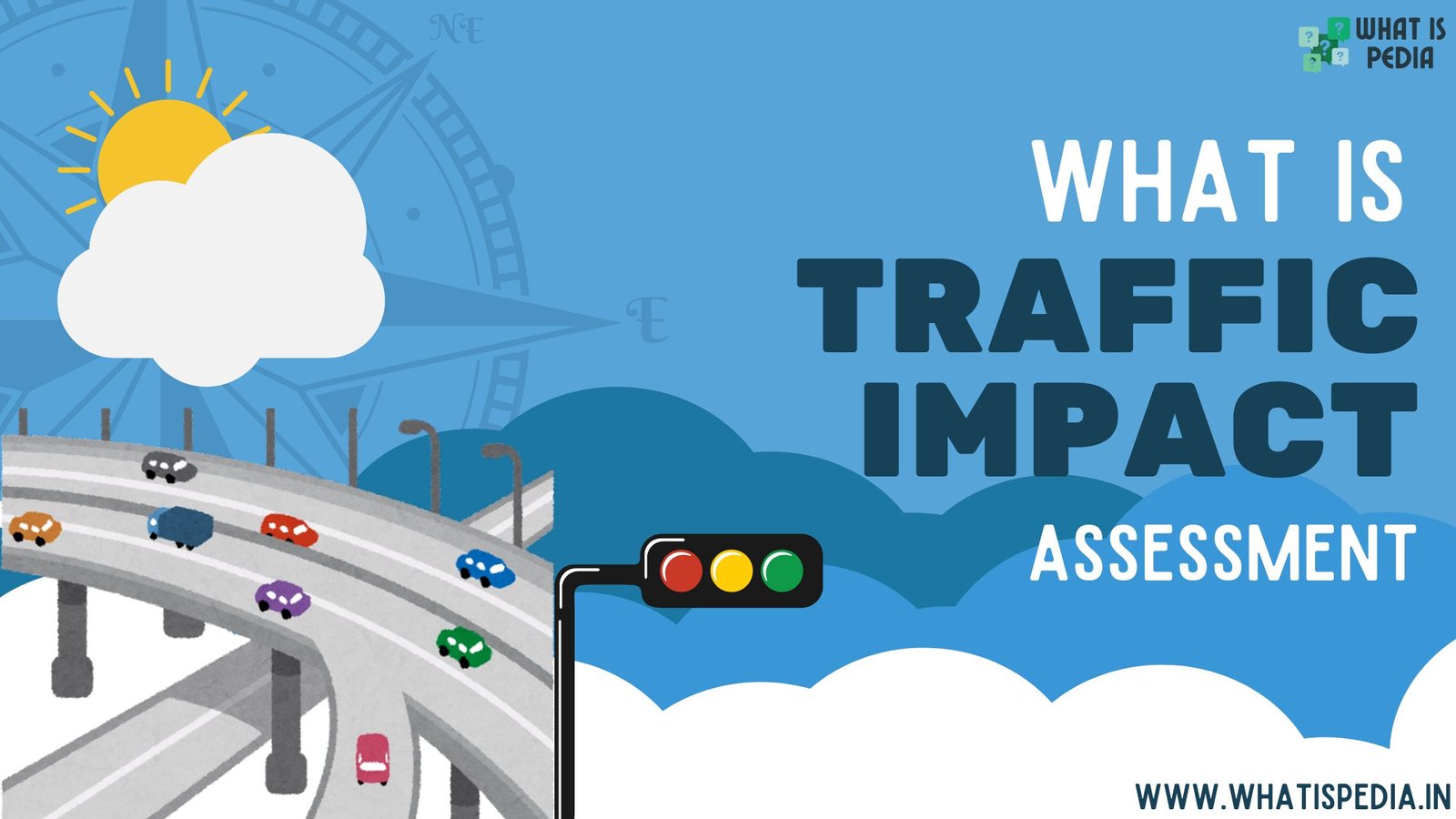Urban growth and infrastructure development bring opportunities—but also traffic challenges. Whether it’s a new shopping mall, a housing development, or a business complex, every new project affects the local road network.
This is where a Traffic Impact Assessment (TIA) plays a vital role.
In this blog, we’ll explore what a Traffic Impact Assessment is, its importance, the process involved, and how it shapes smarter, safer cities.
If you’re a developer, urban planner, student, or just curious about how traffic is managed in growing areas, this guide is for you.
What is Traffic Impact Assessment?
Traffic Impact Assessment (TIA) is a formal study conducted to evaluate the effect a proposed development will have on the surrounding road network and traffic conditions.
It predicts how traffic will increase, what infrastructure changes might be needed, and whether the existing roadways can handle the additional demand.
TIAs are typically required by local governments and planning authorities before granting approval for construction projects.
These assessments help ensure that development does not overload public infrastructure or compromise road safety.
Why is a Traffic Impact Assessment Important?
TIA plays a critical role in sustainable urban planning. Here’s why it matters:
1. Protects Public Safety
By identifying potential traffic congestion or high-risk areas, TIAs help reduce the likelihood of accidents and ensure road safety for all users.
2. Supports Informed Decision-Making
Local authorities use TIA reports to decide whether to approve a development or require modifications to reduce its impact.
3. Prevents Congestion
TIAs predict traffic volumes during peak hours and help in designing solutions to maintain a smooth flow of vehicles.
4. Promotes Infrastructure Planning
TIAs highlight where road improvements, new traffic signals, or additional lanes might be necessary, helping cities plan for future needs.
5. Reduces Long-Term Costs
By addressing traffic impacts early in the planning stage, costly retrofits or emergency fixes can be avoided later.
When is a Traffic Impact Assessment Required?
Not every project needs a TIA. However, most jurisdictions require it for:
-
Large residential developments (e.g., apartment complexes)
-
Commercial spaces (e.g., shopping centers, office parks)
-
Industrial projects (e.g., warehouses or logistics hubs)
-
Public facilities (e.g., schools, hospitals)
The threshold is typically based on the expected number of vehicle trips the project will generate per day or hour. If the number is high, a TIA becomes mandatory.
Key Components of a Traffic Impact Assessment
A TIA report contains several detailed sections. Here are the main elements:
1. Project Description
Outlines the size, type, and location of the proposed development, including land use, access points, and expected completion date.
2. Study Area Definition
Defines the roads and intersections to be analyzed, usually within a radius of the development that will likely be affected.
3. Existing Traffic Conditions
Details current traffic volumes, peak hours, intersection delays, road capacities, and accident history.
4. Trip Generation
Estimates the number of vehicle trips the development will produce using industry-standard models like those from the Institute of Transportation Engineers (ITE).
5. Trip Distribution and Assignment
Predicts where trips will come from and go to, distributing them across different routes in the network.
6. Future Traffic Conditions
Analyzes how traffic will behave once the development is operational, considering both natural traffic growth and the additional load from the new project.
7. Mitigation Measures
Suggests improvements or actions like widening roads, installing traffic signals, or creating new access roads to offset negative impacts.
8. Conclusion and Recommendations
Summarizes findings and proposes whether the project should proceed as-is or with modifications.
The Traffic Impact Assessment Process
Here’s how a typical TIA is conducted:
Step 1: Preliminary Consultation
Before starting, the developer or consultant meets with local traffic or planning authorities to determine the scope and requirements of the study.
Step 2: Data Collection
Traffic data is gathered through manual counts, automated devices, or existing records. This includes vehicle volumes, speeds, signal timings, and accident reports.
Step 3: Traffic Modeling
Software like Synchro, SIDRA, or VISSIM may be used to simulate how traffic will behave with the new development in place.
Step 4: Impact Analysis
The traffic changes are analyzed in terms of capacity, delay, Level of Service (LOS), queue lengths, and safety.
Step 5: Report Preparation
The TIA is compiled into a professional document submitted to authorities for review and approval.
Common Tools Used in TIAs
Several tools and resources aid traffic engineers during assessments:
-
ITE Trip Generation Manual
-
Highway Capacity Manual (HCM)
-
Traffic simulation software like VISSIM or SYNCHRO
-
GIS mapping tools for spatial analysis
-
Road safety audit checklists
These tools help in making accurate predictions and presenting data clearly.
Traffic Impact Assessment vs. Transport Impact Assessment
These terms are sometimes used interchangeably but can differ slightly depending on the region.
-
Traffic Impact Assessment (TIA) focuses primarily on vehicular traffic.
-
Transport Impact Assessment may include broader aspects such as pedestrian movement, public transit usage, cycling, and environmental impacts.
In many countries, the broader Transport Impact Assessment is now favored for sustainable development planning.
Who Prepares a Traffic Impact Assessment?
TIAs are typically prepared by transportation planners, civil engineers, or traffic consultants with expertise in traffic modeling and urban development.
These professionals often hold certifications or licenses and work closely with developers and local authorities.
Real-World Example
Let’s say a developer plans to build a 500-unit apartment complex in a suburban area. The local council requires a TIA. The report reveals:
-
The development will add 1,200 daily trips to the nearby road.
-
Morning peak hours will see 300 additional vehicles.
-
An already congested intersection nearby will worsen.
The solution?
The TIA recommends widening a nearby road, adding a new traffic signal, and building a roundabout for smoother traffic flow. These suggestions are accepted, allowing the project to proceed while minimizing its impact on the local traffic system.
Benefits of Traffic Impact Assessment for Developers
While TIA may seem like a hurdle, it actually offers advantages:
-
Reduces future legal or community objections
-
Improves public relations by showing concern for traffic and safety
-
Speeds up planning approvals with well-documented plans
-
Optimizes site design based on traffic flow insights
Challenges in Conducting TIA
TIAs, while valuable, also come with challenges:
-
Data Accuracy: Outdated or incorrect data can lead to flawed recommendations.
-
Changing Conditions: Future developments or policy changes can affect assumptions.
-
Cost and Time: For small developers, TIA can seem like an added expense.
-
Public Perception: Communities may distrust studies they feel are biased in favor of developers.
Overcoming these requires transparency, updated tools, and strong collaboration between all stakeholders.
Future of Traffic Impact Assessment
As cities embrace smart mobility, TIAs are also evolving. Key future trends include:
-
Inclusion of multimodal transport data (pedestrians, cyclists, transit)
-
Use of AI and big data for real-time modeling
-
Sustainability metrics to assess carbon impact and emissions
-
Integration with smart city planning platforms
Modern TIAs are not just about traffic—they’re about smart, sustainable, and inclusive mobility.
Conclusion
So, what is Traffic Impact Assessment really about? It’s more than a traffic study—it’s a crucial planning tool that ensures developments grow without causing gridlock or safety hazards. By forecasting future traffic and suggesting improvements, TIA supports balanced development and safer roads.
Whether you’re a city planner, developer, engineer, or citizen, understanding TIA helps you see how cities grow responsibly. It’s an essential part of building not just buildings—but better communities.
Curious about chemical compounds affecting health and environment? Learn more in our detailed guide on what is lisphenol and its uses, risks, and impact.







